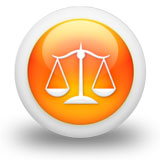We need your consent to use the individual data so that you can see information about your interests, among other things. Click "OK" to give your consent.
ASTM D7892-15
Standard Test Method for Determination of Total Organic Halides, Total Non-Methane Hydrocarbons, and Formaldehyde in Hydrogen Fuel by Gas Chromatography/Mass Spectrometry
STANDARD published on 1.6.2015
The information about the standard:
Designation standards: ASTM D7892-15
Note: WITHDRAWN
Publication date standards: 1.6.2015
SKU: NS-609982
The number of pages: 8
Approximate weight : 24 g (0.05 lbs)
Country: American technical standard
Category: Technical standards ASTM
The category - similar standards:
Annotation of standard text ASTM D7892-15 :
Keywords:
Formaldehyde, high-pressure hydrogen, non-methane hydrocarbons, organic halides,, ICS Number Code 27.075 (Hydrogen technologies)
Additional information
| Significance and Use | ||||||
|
5.1 Low operating temperature fuel cells such as PEMFCs require high purity hydrogen for optimal performance and longevity. Organic halides and formaldehyde can react with catalyst in PEMs and non-methane hydrocarbons degrade PEM stack performance. |
||||||
| 1. Scope | ||||||
|
1.1 The gas chromatography/mass spectrometry (GC/MS) procedure described in this method is used to determine concentrations of total organic halides and total non-methane hydrocarbons (TNMHC) by measurement of individual target halocarbons (Table 1) and hydrocarbons (including formaldehyde, Table 1 and Table 2), respectively. Measurement of these substances is required for application of SAE J2719 to hydrogen fuel quality where this fuel is intended for use in fuel cell vehicles. SAE 2719 states hydrogen fuel is expected to contain less than 0.05 µmole/mole total halogenates (including organic halides), 2 µmole/mole total non-methane hydrocarbons (C1 Basis, 3.2.16) and 0.01 µmole/mole formaldehyde. 1.2 Based upon the GC/MS/full scan analysis of a 400 mL hydrogen sample, the reporting limit (RL) is 0.001 µmole/mole for each target compound listed in Table 1 and Table 2, with the exception of 0.002 µmole/mole for ethane and 0.002 µmole/mole for ethene. 1.3 Mention of trade names in this standard does not constitute endorsement or recommendation for use. Other manufacturers’ equipment or equipment models can be used. 1.4 The values stated in SI units are to be regarded as standard. 1.5 This standard does not purport to address all of the safety concerns, if any, associated with its use. It is the responsibility of the user of this standard to establish appropriate safety and health practices and determine the applicability of regulatory limitations prior to use. |
||||||
| 2. Referenced Documents | ||||||
|
We recommend:
Updating of laws
Do you want to be sure about the validity of used regulations?
We offer you a solution so that you could use valid and updated legislative regulations.
Would you like to get more information? Look at this page.




 Cookies
Cookies
